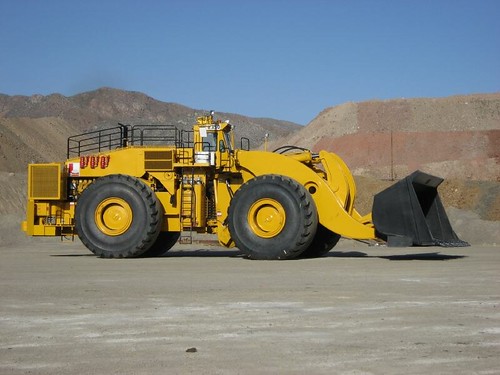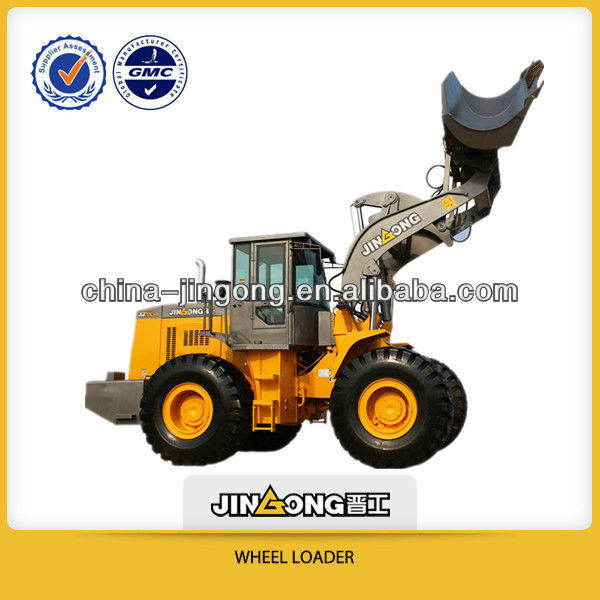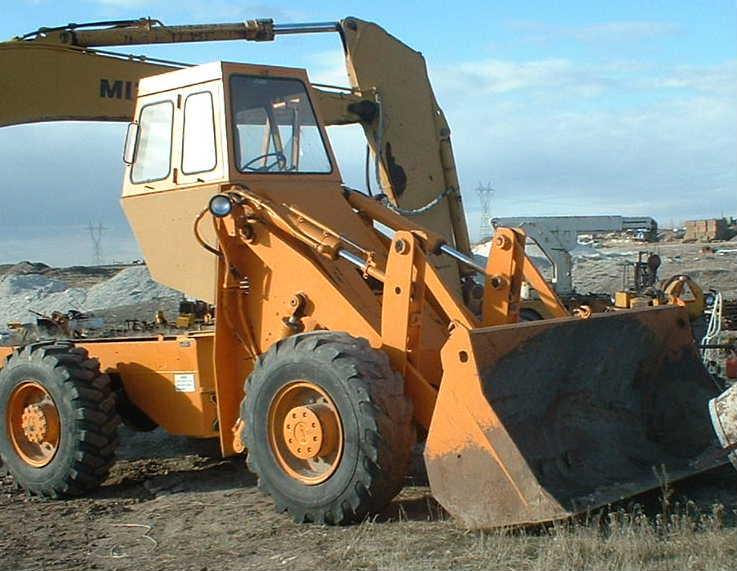* 1 Heavy equipment front loaders
* 2 Armored Wheel Loaders
* 3 Tractor front loaders
* 4 Compact front end loaders
* 5 Skid loaders & track loaders
* 6 Swingloaders
* 7 Gallery
* 8 See also
* 9 Notable manufacturers
* 10 References
* 11 External links
A track loaderClose-up of articulated steering apparatus
Loader removing snow in Jyväskylä, Finland.
A loader (also known as: bucket loader, front loader, front end loader, payloader, scoop loader, shovel, skip loader, and/or wheel loader) is a type of tractor, usually wheeled, sometimes on tracks, that has a front mounted square wide bucket connected to the end of two booms (arms) to scoop up loose material from the ground, such as dirt, sand or gravel, and move it from one place to another without pushing the material across the ground. A loader is commonly used to move a stockpiled material from ground level and deposit it into an awaiting dump truck or into an open trench excavation.
The loader assembly may be a removable attachment or permanently mounted. Often the bucket can be replaced with other devices or tools—for example, many can mount forks to lift heavy pallets or shipping containers, and a hydraulically-opening "clamshell" bucket allows a loader to act as a light dozer or scraper. The bucket can also be augmented with devices like a bale grappler for handling large bales of hay or straw.
Large loaders, such as the Kawasaki 95ZV-2, John Deere 844K, Caterpillar 950H, Volvo L120E, Case 921E, or Hitachi ZW310 usually have only a front bucket and are called Front Loaders, whereas small loader tractors are often also equipped with a small backhoe and are called backhoe loaders or loader backhoes or JCBs, after the company that first invented them.
The largest loader in the world is LeTourneau L-2350. Currently these large loaders are in production in the Longview, Texas facility. The L-2350 uses a diesel electric propulsion system similar to that used in a locomotive. Each rubber tired wheel is driven by its own independent electric motor.Loaders are used mainly for uploading materials into trucks, laying pipe, clearing rubble, and digging. A loader is not the most efficient machine for digging as it cannot dig very deep below the level of its wheels, like a backhoe can. The capacity of a loader bucket can be anywhere from 0.5 to 36 m³ depending upon the size of the machine and its application. The front loader's bucket capacity is generally much than a bucket capacity of a backhoe loader.
Unlike most bulldozers, most loaders are wheeled and not tracked, although track loaders are common. They are successful where sharp edged materials in construction debris would damage rubber wheels, or where the ground is soft and muddy. Wheels provide better mobility and speed and do not damage paved roads as much as tracks, but provide less traction.
In construction areas loaders are also used to transport building materials - such as bricks, pipe, metal bars, and digging tools - over short distances.
 Wheel Loader
Wheel Loader Wheel Loader
Wheel Loader Wheel Loader
Wheel Loader Wheel Loader
Wheel Loader Wheel Loader
Wheel Loader Wheel Loader
Wheel Loader Wheel Loader
Wheel Loader Wheel Loader
Wheel Loader Wheel Loader
Wheel Loader Wheel Loader
Wheel Loader Wheel Loader
Wheel Loader Wheel Loader
Wheel Loader Wheel Loader
Wheel Loader Wheel Loader
Wheel Loader Wheel Loader
Wheel Loader
No comments:
Post a Comment